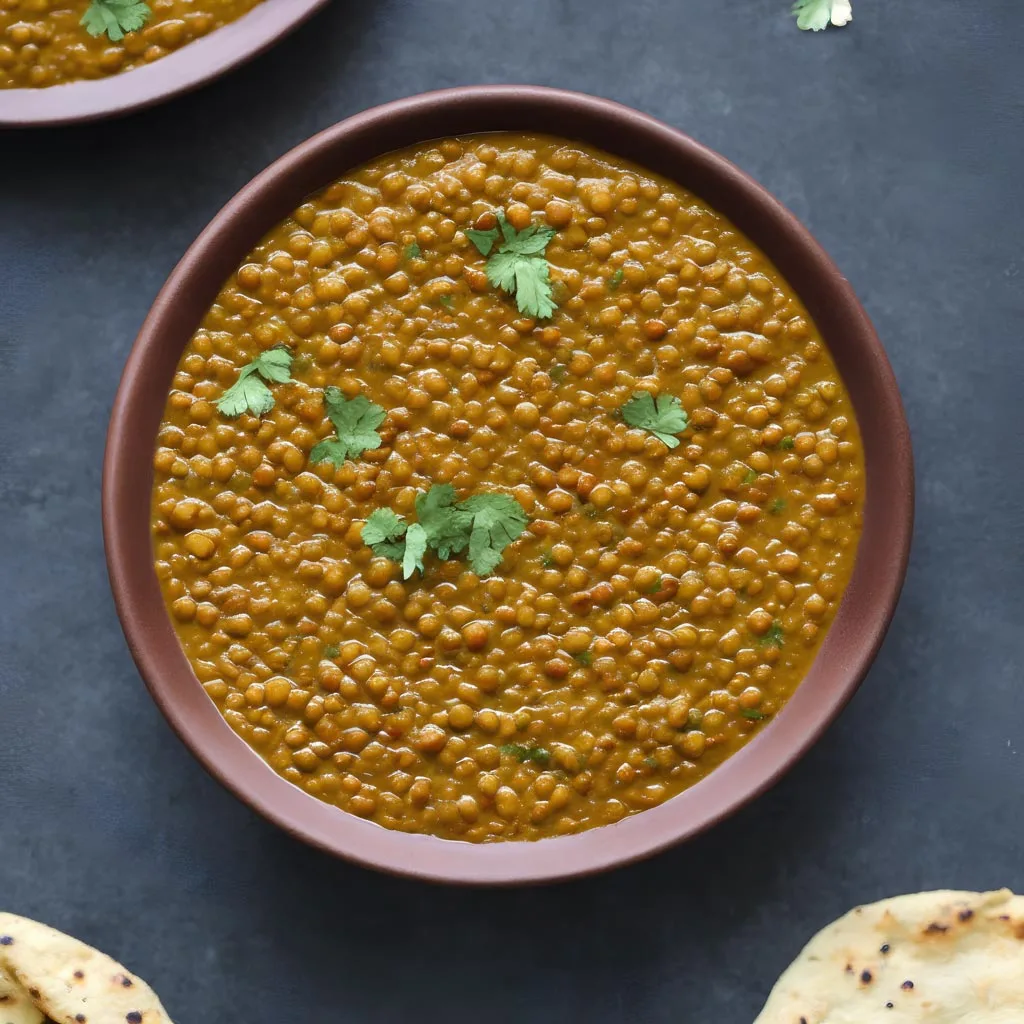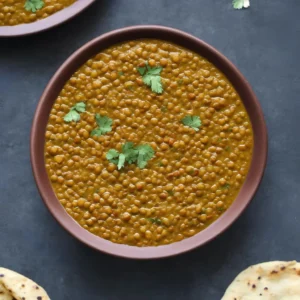
If you’re looking for a comforting and nutritious dish that’s bursting with flavor, you’ve come to the right place. Today, I’m excited to share with you my recipe for Whole Masoor Dal, a classic Indian lentil dish that’s hearty, satisfying, and packed with aromatic spices.
Originating from the Indian subcontinent, this dish has been cherished for generations for its simplicity and incredible taste.
Whole Masoor Dal, also known as brown lentils, takes center stage in this recipe, bringing a rich earthiness and creamy texture to the dish.
Combined with a medley of spices including turmeric, cumin, coriander, and chili powder, each bite is a symphony of flavors that will tantalize your taste buds and leave you craving for more.
Despite its complex flavors, this recipe is surprisingly easy to make, making it perfect for beginners and seasoned cooks alike. With just a handful of ingredients and a few simple steps, you can whip up a delicious and nutritious meal that’s sure to impress your family and friends.
Expert Tip: Ghee adds a nutty aroma and a silky texture to the dish, taking it to the next level of deliciousness.
Whole Masoor Dal (Brown Lentils): Whole Masoor Dal, also known as brown lentils, is the star of this dish. These nutritious legumes are rich in protein, fiber, and essential nutrients, making them a wholesome addition to any meal. They lend a creamy texture and hearty flavor to the dal, creating a comforting and satisfying dish.
Salt: Salt not only enhances the natural flavors of the lentils but also helps to balance the spices and seasonings in the dish. It adds depth and complexity to the overall flavor profile, ensuring each bite is perfectly seasoned.
Chilli Powder: Chilli powder provides a subtle kick of heat to the dal, adding warmth and depth to the dish. It complements the other spices and enhances the overall flavor profile, without overpowering the dish with spiciness.
Turmeric Powder: Turmeric powder not only adds a vibrant golden hue to the dal but also imparts a warm and earthy flavor. It’s known for its anti-inflammatory properties and adds depth to the dish, elevating it to new heights of deliciousness.
Cumin Powder: Cumin powder brings a warm and nutty flavor to the dal, enhancing its overall complexity. It pairs beautifully with the other spices and adds a delightful aroma to the dish.
Coriander Powder: Coriander powder adds a citrusy and slightly sweet flavor to the dal, balancing the earthiness of the lentils and spices. It lends a refreshing brightness to the dish, making each bite incredibly flavorful.
Coriander (Finely Chopped): Fresh coriander, also known as cilantro, adds a burst of freshness and color to the dish. It’s used as a garnish and adds a vibrant herbal flavor that complements the other ingredients perfectly.
Tadka:
Butter: Butter is used to prepare the tadka, or tempering, for the dal. It adds richness and depth to the dish, creating a luxurious mouthfeel and enhancing the overall flavor profile.
Garlic (Finely Chopped): Garlic adds a pungent and aromatic flavor to the tadka, infusing the dish with its distinctive taste. It adds depth and complexity to the overall flavor profile, elevating the dal to new heights of deliciousness.
Cumin Seeds: Cumin seeds are toasted in butter to release their warm and nutty flavor, which infuses the tadka with a delightful aroma and taste. They add depth and complexity to the dish, enhancing its overall flavor profile.
Chilli Powder: Additional chilli powder is added to the tadka to intensify the heat and flavor, adding a spicy kick to the dish. Adjust the amount according to your personal preference for heat.
Expert Tip: Experiment with different variations of tadka to customize the flavor of the dal to your liking
Expert Tip: Simply heat a dry skillet over medium heat and add the spices. Toast them gently until fragrant, being careful not to burn them.
Yes, you can. While Whole Masoor Dal (brown lentils) is traditionally used for this recipe, you can also use other types of lentils such as split red lentils (masoor dal), green lentils, or yellow lentils. Keep in mind that cooking times may vary depending on the type of lentils used.
Absolutely! Whole Masoor Dal actually tastes even better the next day as the flavors have had time to meld together. Simply store it in an airtight container in the refrigerator for up to 3-4 days. When ready to serve, reheat gently on the stovetop or in the microwave, adding a splash of water if needed to adjust the consistency.
Yes, this recipe is completely vegetarian. To make it vegan-friendly, you can substitute butter with a plant-based alternative such as vegan butter or oil. Ensure that all other ingredients used are also vegan-friendly.
Absolutely! Feel free to adjust the amount of chili powder according to your personal preference for heat. You can also add fresh green chilies for extra heat or reduce the amount of chili powder for a milder flavor. Taste as you go and adjust the spices accordingly.
Yes, you can freeze Whole Masoor Dal for longer-term storage. Allow the dal to cool completely before transferring it to a freezer-safe container or zip-top bag. It can be stored in the freezer for up to 3 months. To reheat, thaw overnight in the refrigerator and reheat gently on the stovetop or in the microwave.
Here are some more recipes for you to enjoy! If you my recipes don’t forget to rate and leave a comment.
If you have any recipe suggestions, please do not hesitate to ask me. A great way to stay in contact with me is through Instagram, Facebook, Twitter and YouTube. Don’t forget to tag me @CookwithNabeela in your recipe photos!

Subscribe now to receive my latest recipes directly in your inbox. Stay up-to-date and never miss out!

I love to cook! I want to share with you my favourite, delicious family-friendly recipes. I want to inspire you to create fantastic food for your family every day.
Add your first comment to this post